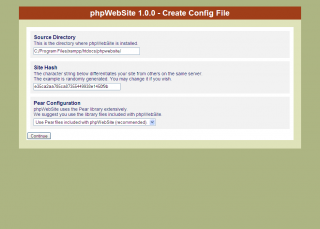Version control access has been restored to the phpWebSite project.
SVN access available! – phpWebSite
I had a bright idea last week. One of the annoying aspects of phpWebSite maintenance is downloading individual modules, expanding them, and copying them over the existing modules. Why not use Subversion to update the core and mod directories of phpWebSite? The procedure would be the same as that advocated by WordPress here. Since I recently added the Subversion client capability to my remote host, the update process would be much smoother, less error prone, and consume less bandwidth.
As a test I checked out a copy of the development version of phpWebSite to my PC. I run a local test site under Windows using XAMPP. Yea, I know I am weird thinking I can run phpWebSite under windows. I then copied over the files I needed from my existing configuration and renamed the directories. Then I went into Boost and updated the modules. After fixing the windows specific errors with updating FileCabinet and menu(i.e. creating directories did not work) modules, all of the modules are now updated and I am ready to update the site using subversion next time.
Now to make this whole scenario work for a production site we need a little help from the folks maintaining the Subversion repository. I would like to use Subversion to get the stable version rather than the development version. If they would create a tag for the stable release like the folks at WordPress, then I could use the Subversion “switch” command to update to the latest stable version. I use the switch command with WordPress to update my test blog and this is a slick way to update the files.


 On the next screen you will need to make sure that phpwebsite is entered in the box for Database Name and Database User. You will need to enter the User’s password you created above into the Database password box. The Host Specification should be localhost and the other boxes can be blank. Click on the Continue button to go to the next screen.
On the next screen you will need to make sure that phpwebsite is entered in the box for Database Name and Database User. You will need to enter the User’s password you created above into the Database password box. The Host Specification should be localhost and the other boxes can be blank. Click on the Continue button to go to the next screen.